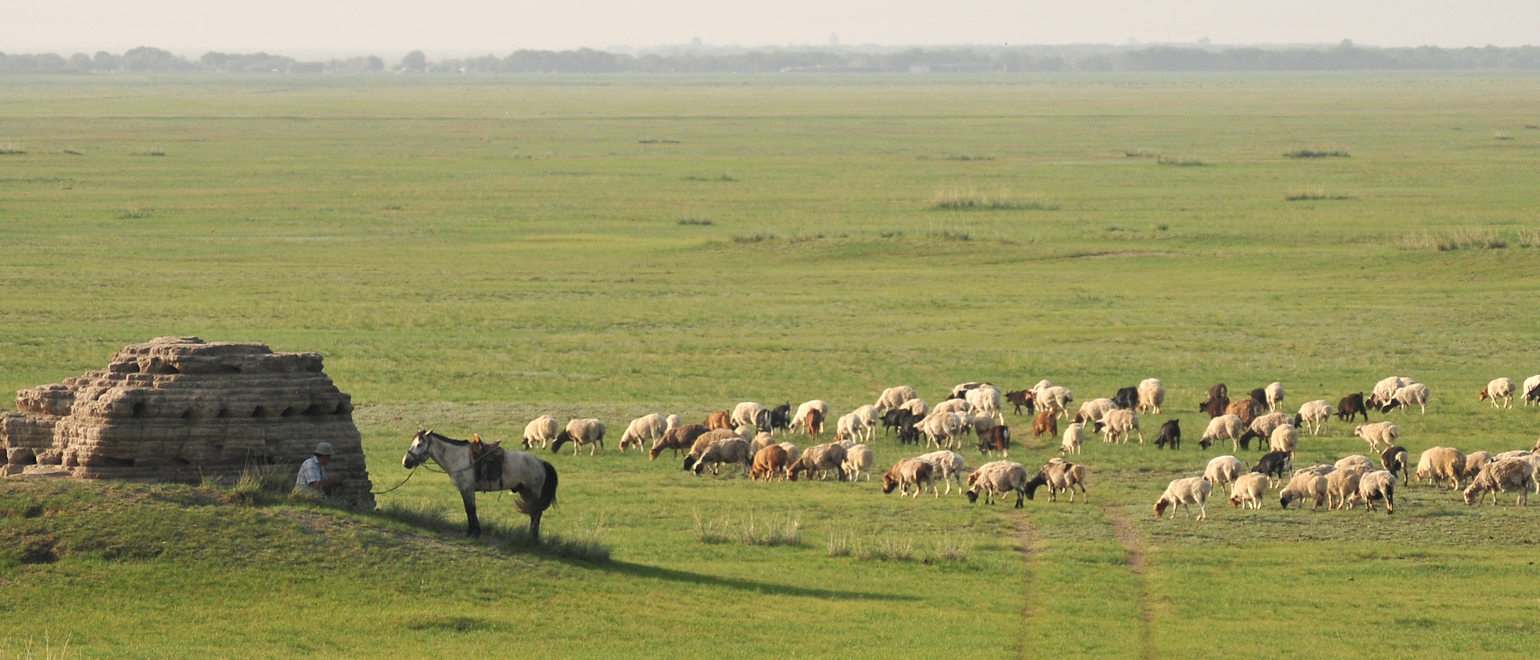
The History of the Research Project
Mongolian-German cooperation in the field of archaeology has been ongoing for over 20 years. It takes place within two major projects – the Mongolian-German Karakorum Expedition and the Mongolian-German Orkhon Expedition. Numerous excavations, research, cultural preservation measures, teaching events and publications are carried out within these projects.
The Mongolian-German Karakoram Expedition (MDKE)
During the socialist era, archaeological research was carried out in Karakorum by Mongolian and Soviet scientists. The democratic change in Mongolia in 1990 also opened up new opportunities for research in Karakorum. In 1995 and 1996, UNESCO and Japanese scientists supported a project to research and preserve Karakorum. The city complex was surveyed and the surface examined. The researchers found that the preservation of the ruins was endangered by various influences. The threats included agricultural use, encroaching buildings, robbery by treasure hunters and vehicle traffic. However, the greatest damage had been caused over the years by the archaeologists themselves: Many excavation cuts and soundings from the various expeditions had remained unfilled and the uncovered remains had been exposed to weathering and decay. Following these findings, the city ruins were surrounded by a fence for the first time in order to better protect and preserve them. Following these initial collaborations with foreign colleagues, a cooperation agreement was signed in the fall of 1998 between the Mongolian Academy of Sciences, the University of Bonn and the German Archaeological Institute. The agreement provided for the establishment of the Mongolian-German Karakorum Expedition and the joint research of the deserted city by German and Mongolian scientists. The patronage of the presidents of both countries also underlined the political significance of this project. The first joint excavation campaigns took place in 2000. Since then, various excavations, research, cultural preservation projects and exhibitions have been carried out regularly around the medieval city.

The Mongolian-German Orkhon Expedition (MONDOrEx)
Karakorum is not the only important historical site in the Orkhon Valley. A second historical imperial capital, Karabalgasunu, is located just 30 kilometres downstream. Karabalgasun was the metropolis of the Uyghur Empire from around 742 to 840. In 2007, the Mongolian-German Orkhon Expedition was launched by the German Archaeological Institute and the Mongolian Academy of Sciences to explore Karabalgasun and other archaeological monuments in the Orkhon Valley. A short time later, the National University of Mongolia joined the cooperation. In the same year, the surveying and exploration of Karabalgasun began. This project continues to this day and represents a further intensification of Mongolian-German cooperation in the field of culture and education. In 2018, the Dresden University of Applied Sciences became another partner in the project, contributing modern digital technologies to the research. It is also a partner in the development of training and further education programs. Several summer schools have already been organized with Mongolian, German and international students in Mongolia and Germany, promoting exchange and international understanding.